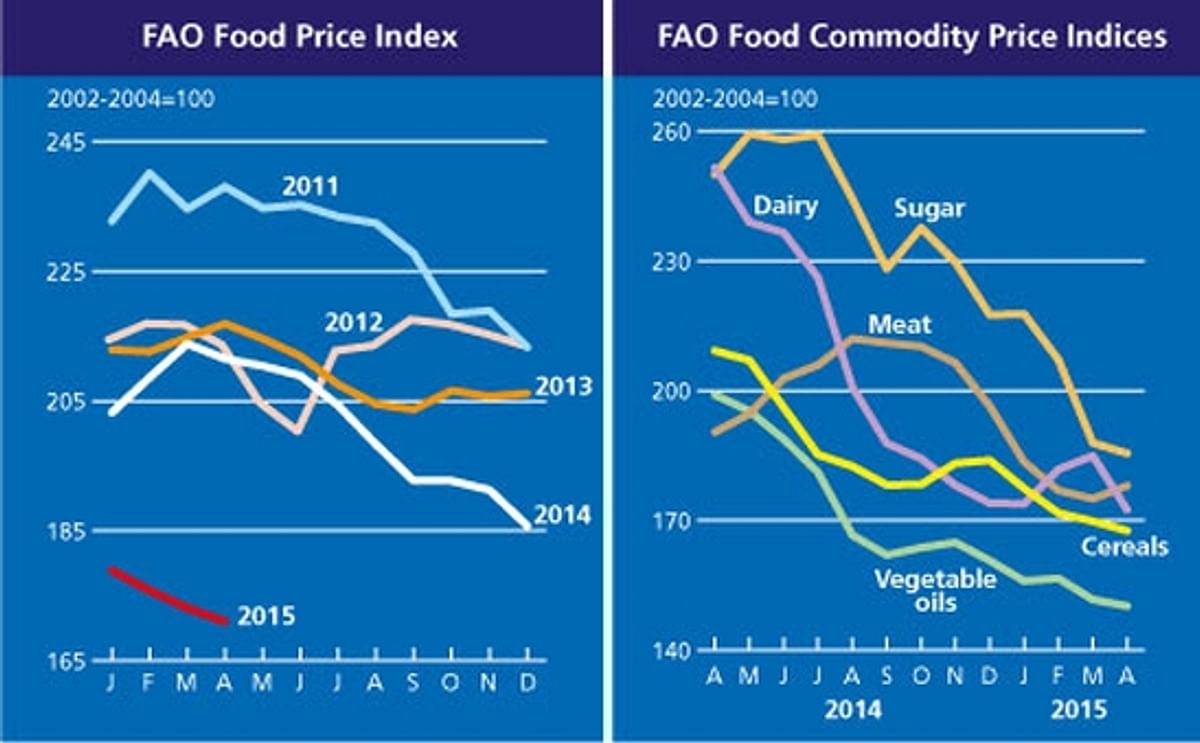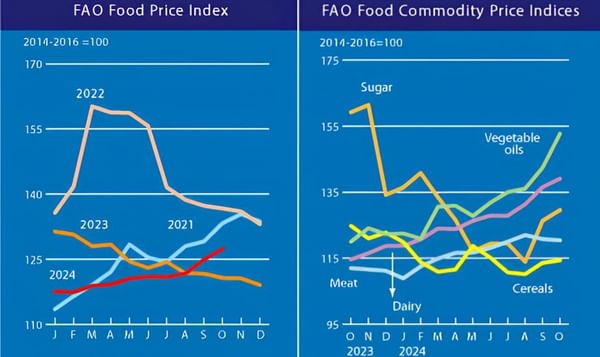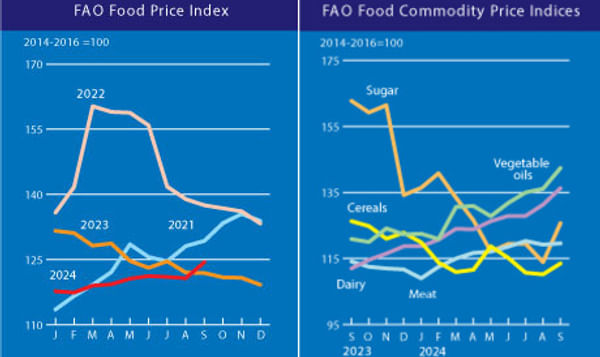The FAO Food Price Index averaged 171 points in April 2015, down 2.1 points (1.2 percent) from March and 40.5 points (19.2 percent) below its level in April 2014. Dairy prices fell most, but sugar, cereals and vegetable oils prices also declined. By contrast, meat values rose in April, their first increase since August 2014. The April average puts the FAO Food Price Index at its lowest level since June 2010.
The FAO Cereal Price Index averaged 167.6 points in April, down 2.2 points (1.3 percent) from March and nearly 42 points (20 percent) below the corresponding month last year. Wheat prices continued their decline in April, influenced by large supplies and slow trade activity, as many buyers await in expectation of even lower prices in the coming months. Maize quotations changed little compared to March, with stronger import demand being offset by prospects for more than ample supplies. Rice prices moved marginally lower, on subdued demand.
The FAO Vegetable Oil Price Index averaged 150.2 points in April, down 1.5 points (or 1 percent) from March. The slide was driven by palm oil, the key commodity in the index. International palm oil quotations continued to ease as higher than expected output in Indonesia and Malaysia coincided with weak global import demand. Global soy oil prices, on the other hand, increased slightly, reflecting concerns about slower than usual farmer selling and renewed strikes in South America. Prices for sunflowerseed oil strengthened amid falling world production and export supplies.
The FAO Dairy Price Index averaged 172.4 points in April, down 12.5 points (6.7 percent) from March. Milk powders and butter were the main commodities affected. The price weakness affecting the sector reflects a favourable opening to the April-March dairy year in the EU, combined with the abolition of the milk quota system, which raised expectations of abundant export supplies. Dairy prices were also influenced by uncertainty over the level of China's purchases during 2015 and continued import prohibitions imposed by the Russian Federation.
The FAO Meat Price Index averaged 178 points in April, up 3 points (1.7 percent) from its revised March value. The main causes of the rise were higher prices for bovine and ovine meat from Oceania, where herd rebuilding restricted exports. Pigmeat prices also showed some upward movement, while those of poultry were lower. For meat overall, moderately higher import demand in China, Japan, the United States and Vietnam is the main factor underpinning the market.
The FAO Sugar Price Index averaged 185.5 points in April, down 2.4 points (1.3 percent) from March and reaching its lowest level since February 2009. The decrease was mainly fueled by reports of higher than expected sugarcane harvesting in Brazil, the world's largest producer and exporter of sugar. Also, India's recent announcement it would raise sugar import tariffs from 25 percent to 40 percent, in a bid to support falling domestic prices, weighed on international sugar quotations. Persistent weakness in the Brazilian currency (Real) against the US dollar also kept the FAO Sugar Price Index under pressure.
- Nieuws
- Ingredienten
- The FAO Food...
The FAO Food Price Index keeps falling

Inloggen or Inschrijven to use this flag.

mei 10, 2015
Bron
FAO
Like to receive news like this by email? Join and Subscribe!
Join Our Telegram Channel for regular updates!
Related News

november 09, 2024
Higher quotations across a range of commodities push the FAO Food Price Index to its highest level in 18 months

oktober 05, 2024
Higher quotations across the board push the FAO Food Price Index up in September

september 30, 2024
One Duynie brand exceeds the sum of its parts
Latest News
Sponsored Content
Sponsored Content
Sponsored Content
Sponsored Content
Waar
Sponsored Content









